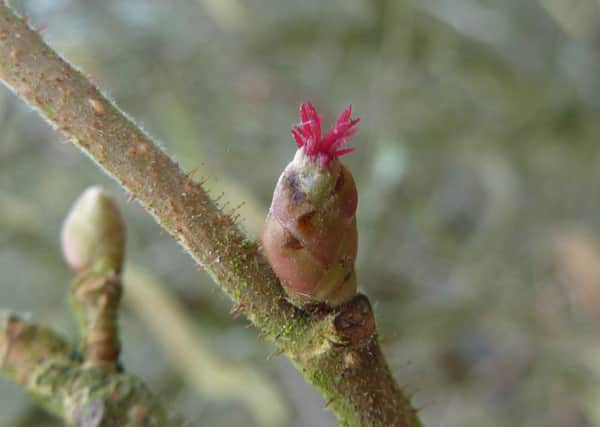Rodents contribute to decline of energy giving trees


Yet they are under threat, not like so many of our trees from some imported fungus, but from squirrels.
I was always very fond of squirrels, until I planted a row of hazel trees. Now I’m much more picky. I’ve gone off the grey ones. They seem to think the nuts have been planted for their benefit and given half a chance they get to them very early.
Advertisement
Hide AdAdvertisement
Hide AdOne of the reasons the grey squirrels can out compete the red ones is that they don’t mind eating hazel nuts that are not quite ripe.
Your average red squirrel has impeccable manners. They wait around until the nuts are at their best, eat as many as they can and bury most of the rest. If they live through winter they’ll eat this supply but if they have a bit of a surplus or they die before their stores are used up then they have neatly planted the next generation of hazel trees.
The grey ones squirrel away nuts that are much less likely to germinate. So there are many fewer new trees coming through than there used to be.
Across the country as greys push out reds, hazel trees are getting older and aren’t being replaced by enough youngsters when they die.
Advertisement
Hide AdAdvertisement
Hide AdHazel trees won’t spectacularly disappear from the countryside in a few years like elms, but eventually they will become a scarce resource and their loss will be a real problem for wildlife and will remove a rural resource that was highly valued in the past.
Because hazels grow fresh shoots so vigorously they’ve been used by humans for everything from easy-to-cut kindling though to an ideal material for basket weaving. They also proved ideal for layering a hedge to keep stock in.
Surprisingly, they are also useful for my bees. I’d always thought that being wind pollinated they couldn’t possibly provide food for bees. Then I learned that bees are rather cleverer and better equipped than I gave them credit for.
It seems that the bees have a small static electric charge which attracts pollen towards them. So they can fly back and forth through a stream of air that contains high concentrations of hazel pollen grains, and get a useful supply of protein early in the year when it’s in short supply.
Advertisement
Hide AdAdvertisement
Hide AdMany other insects depend on feeding off the leaves, sap or dead wood on hazel trees.
The scientist J.B.S. Haldane was of the view that if God was responsible for individual acts of creation then he must have had an enormous fondness for beetles. Since there are around 350,000 different species they have to specialise quite a lot. So there are species that rely heavily on hazels as a food source and a lot of species will go along with the trees.
Other forms of wildlife find the nuts to be a rich energy source. They’re ideal for any animal with the teeth to gnaw its way through the tough outer shell. Since that includes humans there are some fantastic traditional recipes for hazelnuts and they were an invaluable source of food for ancient humans.
My own favourite recipe consists of roasted skinned hazelnuts ground into a form of butter and then mixed with large quantities of chocolate and whipped cream before being flavoured with grated orange and a touch of cinnamon. In parts of central Europe this is a classic dish.
Advertisement
Hide AdAdvertisement
Hide AdGiven the large amounts of chocolate required it’s unlikely that ancient man would have benefited from this recipe. Fortunately things have moved on a bit and this particular ancient man can highly recommend a large slice with your morning coffee.